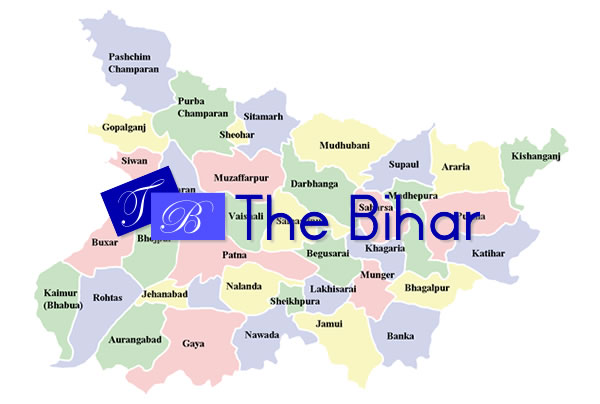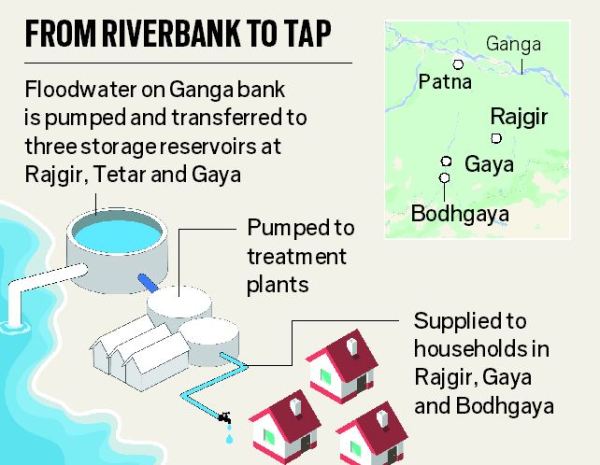Here’s a timeline of controversial decisions by ‘Honourable Governors’
6 min read The drama surrounding the swearing-in and eventual resignation of BJP’s B S Yeddyurappa in Karnataka may have been an embarrassment for the BJP, but it was probably a bigger loss of face for the position of the Governor of the state, Vajubhai Vala. The opposition parties sought the intervention of the Supreme Court in the matter, which led to a sharp reduction in the number of days provided to Yeddyurappa and BJP to prove their majority in the house.
The drama surrounding the swearing-in and eventual resignation of BJP’s B S Yeddyurappa in Karnataka may have been an embarrassment for the BJP, but it was probably a bigger loss of face for the position of the Governor of the state, Vajubhai Vala. The opposition parties sought the intervention of the Supreme Court in the matter, which led to a sharp reduction in the number of days provided to Yeddyurappa and BJP to prove their majority in the house.
The Governor came in for strong criticism from both political parties and political commentators for his partisan role. He was accused of ignoring the fact that the Congress-JD(S) post-poll alliance had the requisite numbers while the BJP was short. The appointment of the pro-tem speaker by the former finance minister of Gujarat, Vala also came in for censure. The Supreme Court asked the letter handed over by Yeddyurappa to the Governor to be produced before it in order to ascertain whether he had the requisite numbers or not. The letter was eventually found to be vaguely worded without any mention of the numbers in support of the BJP.
However, this was not the first time that the Governor’s office faced such criticism for its actions. State governors appointed by the Union government have had a history of courting controversies especially when it comes to government formation in a hung house.
Here is a list of occasions when the role of the Governor faced criticism:
1952 (Madras): It was the first time when the governor office was accused of acting inappropriately after independence. Governor Sri Prakasa invited C Rajagopalachari to form the Congress government in Madras, despite the fact that Gopalachari was not an elected member of the assembly and had not participated in the then elections.
1959 (Kerala): First democratically elected left government of E M S Namboodiripad was dismissed by Governor Burgula Ramakrishna Rao, after the two bills, one on cap on landownership, and the other on education, proposed by CPI government led to massive agitation in the state. The Union government led by PM Jawaharlal Nehru decided to dismiss the left government in the state.
1967 (West Bengal): Governor Dharma Vira dismissed the government of United Front headed by Ajoy Mukherjee and appointed P C Ghosh as the new CM in a Congress supported government.
1970 (West Bengal): Three years later, the discretionary power of the Governor was misused again in West Bengal. In March 1970, Ajoy Ghosh of the United Front government resigned as CM, thereafter, CPM leader Jyoti Basu staked claim, assuring he would prove majority, but the then governor Shanti Swaroop Dhawan ignored the demand, and imposed President’s rule in the state.
1982 (Haryana): Haryana Governor, Ganapatrao Devji Tapase dismissed Lok Dal and BJP coalition and overlooked the CM candidate Devi Lal. He invited Congress’ Bhajan Lal to form the government earning the ire of Devi Lal and criticism from political commentators.
1984 (Andhra Pradesh): In the year 1983, under N T Rama Rao, Andhra Pradesh got the first non-Congress government, but an year later, when NTR went to the US for heart surgery, his finance minister Nadendla Bhaskara Rao, a former Congressman broke the party and staked claim as CM. He was supported by Governor Ram Lal and was made the Chief Minister.
1988 (Karnataka): Governor P Venkatasubbaiah did not give opportunity to Karnataka Janata Dal Chief Minister S R Bommai to prove his majority in the assembly, despite, Bommai presenting him the copy of resolution signed by the legislature party.
1994 (Goa): Governor Bhanu Pratap Singh dismissed the government of Wilfred D’Souza, after five ministers from his cabinet resigned. Singh installed Ravi Naik without consulting the centre.
1996 (Gujarat): CM Suresh Mehta of the BJP faced rebellion from Shankar Singh Vaghela and 40 other MLAs. Post-defection, Governor Krishna Pal Singh ordered Mehta to prove his majority in the Vidhan Sabha. The government succeeded in proving its majority, but Pal sent the report to the then PM H D Deve Gowda, recommending President’s Rule in the state.
1997 (Uttar Pradesh): In Feb 1998, Kalyan Singh led BJP govt in UP fell short of majority after Loktantrik Congress and Janata Dal MLAs withdrew support from the party. Governor Romesh Bhandari immediately dismissed the government and installed Loktantrik Congress’ Jagdambika Pal as the new CM of the state. Jagdambika Pal had to resign three days later after court restored Kalyan Singh as CM.
2005 (Bihar): Governor Buta Singh recommended dissolution of Bihar assembly in 2005, despite the JD(U) and the BJP claiming that they fulfilled the requirements of forming the government with the support of 115 MLAs in the 243 member house, but Singh tried his best to not allow the NDA to form the government.
2005 (Jharkhand): Governor Syed Sibtey Razi installed Jharkhand Mukti Morcha’s Shibhu Soren as the new CM, despite the NDA claiming the support of 41 MLAs in the 80 member assembly. The matter reached Supreme Court which ordered a floor test. Soren failed to prove his majority in the house and BJPs Arjun Munda was sworn in as the CM of the state.
2010 (Karnataka) In September that year, the B S Yeddyruppa government faced rebellion from 16 MLAs. Speaker K G Bopiah called for the floor test and disqualified the rebel MLAs from the Karnataka Assembly. Consequently, Yeddyurappa proved his majority through a voice vote. The Supreme Court later came down heavily on the Speaker’s actions. The Governor H R Bhardwaj questioned the manner in which the majority was proved and sent a letter to the President recommending President’s rule. The Union government rejected his suggestion.
2016 (Uttarakhand): In March 2016, 9 Congress MLAs including 26 BJP MLAs rebelled against Harish Rawat-led Congess government in Uttarakhand against the finance bill. The rebel MLAs were later disqualified. Governor K K Paul asked the Modi government to impose President’s Rule in the state, but Uttarakhand high Court judge K M Joseph quashed President’s rule and Rawat proved his majority.
2016 (Arunachal Pradesh): On December 9, a group of rebel Congress MLAs approached Governor J P Rajkhowa to impeach the speaker, Nabam Rebia of Arunachal state assembly . Congress protested, but the Modi government imposed President’s Rule in the state. Later, with Supreme Court’s intervention, President’s Rule was lifted and court rejected the pleas of rebel congress MLAs.
2017 (Goa): In the year 2017, no party won a clear majority in the Goa state assembly elections. Congress emerged as the single largest party winning 17 seats in the 40 seat assembly. However, Governor Mridula Sinha, invited the BJP to form the government.
2017 (Manipur): Here again, in the 60 member assembly, Congress emerged as the single largest party winning 28 seats, however governor Najma Heptullah invited BJP first to prove majority and later BJP cobbled together 4 MLAs from National Peoples Party, 4 from Naga Peoples Front and one from Trinamool Congress to form the government with BJP’s Biren Singh was sworn in as Chief minister of the state.
2017 (Bihar): Nitish Kumar-led JD(U) broke the grand alliance with Congress and RJD in Bihar, and later formed alliance with former foe-BJP and staked claim to form the government. BJP appointed Governor Keshari Nath Tripathi ignored single largest party RJD’s claim and made Nitish Kumar the Chief Minister.
2018 (Meghalaya): Here too the Congress lost another state despite winning more seats than any other party in the elections. In the 50 seat assembly, the Congress won 21 seats, followed by NPP 19, and BJP and UDP, two and six, respectively. However, governor Ganga Prasad invited Conrad Sangma of the NPP to prove his majority. Sangma’s NPP formed the alliance with UDP, PDF, HSPDP, and the BJP to form the government in the state.
Courtesy: Business Standard


